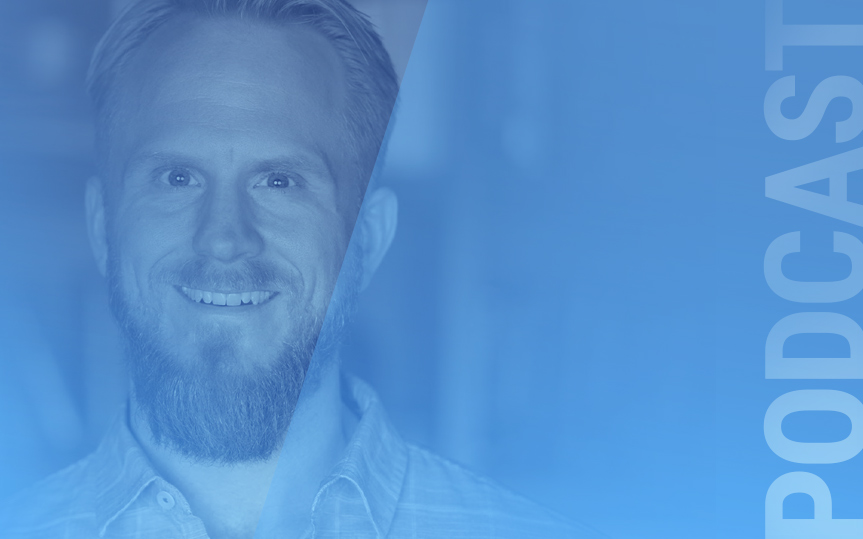Jobs-To-Be-Done Theory: Understand Your Customers Better

Dan Balcauski, the founder of Product Tranquility and a SaaS packaging and pricing expert, joined us on a recent episode of the Predictable Revenue podcast to talk about the Jobs-to-be-Done theory. Too many companies today are orienting their sales processes to their own internal measures of success rather than their customers’ measures of success, and they’re losing deals because of it. On top of that, most salespeople only focus on the functional aspects of a sale, disregarding or underutilizing the social and emotional aspects that influence the decision. We asked Dan what companies and salespeople should be doing instead.
WHAT IS JOBS-TO-BE-DONE?
The Jobs-to-be-Done theory was developed by leaders like Ted Levitt (people don’t want a ¼ inch drill bit, they want a ¼ inch hole), Peter Drucker (customers rarely buy what companies think they’re selling), Clayton Christensen (Disruptive Innovation Theory), and Tony Ulwick (Outcome Driven Innovation). It explains that products are hired by customers to do a job. It gives us a framework to determine why customers choose to bring certain products into their business as well as the outcomes customers are hoping to achieve and the obstacles blocking the way. In short, products match problems, not people. While people, roles, demographics change, problems are consistent over time and arise in specific contexts. For example, broadcast communication at a distance has always been a challenge for human beings trying to relay messages to others out of earshot or line of sight. Solutions to this problem over the years have included smoke signals, lighthouses, and Twitter. It doesn’t matter if you’re a Norseman, a sea captain, or a couch potato – the problem is the same. We have to know the problems, desired outcomes, and contexts of our customers in order to sell effectively. The Jobs-to-be-Done theory helps us do that.
3 JOBS
There are multiple jobs outlined by the Jobs-to-be-Done theory. Dan uses Airbnb as an example to explain each of them. A functional job is solution agnostic (independent of any solutions or technologies). A prospective guest needs to find accommodation within their budget. Airbnb’s filter by price feature gets that job done. Beyond the functional job, there are emotional and social jobs. Customers want to achieve a certain business outcome, but they also want to feel and be perceived a certain way. A prospective guest wants to feel safe in their accommodation, and Airbnb’s reviews let them do that. A prospective guest also wants to share their experience with their friends and write their own reviews so they have authority as a traveller. Airbnb’s features let them do that. The functional, emotional, and social jobs to be done often combine into functional aspects of a product that solve fundamentally different needs.
The emotional job is key to persuasion, Dan maintains. The Jobs-to-be-Done theory describes two types of forces moving customers towards and away from outcomes. Push and pull move a customer towards a new solution. Push encompasses the discomfort, pain, dissatisfaction with their current situation. Pull represents the draw to a new solution that could make their life easier. Anxiety and attachment are the inertia pulling customers back to the status quo – anxiety about what could happen if they make the wrong choice or if the new solution doesn’t work as planned and attachment to the comfort of their current situation. Identifying these emotional struggles is key so that you can empathize with your prospects’ struggles, increase the discomfort with the status quo, and decrease anxiety about making a change.
Even if your product is great functionally, people buy based on emotion (even in a B2B context).
INTERCOM
After the Jobs-to-be-Done theory became better-known, a lot of software companies struggled to find ways to apply it. Many of the theory’s developers refer to physical products like cars, ice cream and power drills in their examples. Intercom was one of the first in the software space to effectively utilize the method (they even wrote a book about it). They discovered that lots of companies spent a lot of time and energy building their buyer personas based on demographics, but because these attributes didn’t map to customers in the real world, they didn’t work. Intercom strove to use Jobs-to-be-Done to get a core understanding of customer jobs so they could dictate how their software should evolve and how they would bring value to customers.
In the B2B world, we have numerous potential stakeholders involved in purchasing decisions who are each trying to complete different jobs. To continue the Intercom example: the company has a purchase decision-maker, often a VP Sales or CRO; a job executor, like an SDR or CSM; and a product life cycle support team that gets their software up and running and maintains it, like a sales operations person. Using Jobs-to-be-Done, Intercom uncovered what each of them cared about and put that information to use – to great success.

RESEARCH PROCESS
So, how can you replicate Intercom’s success with Jobs-to-be-Done in your business? Dan shared his process.
Either the marketing or product team (or both) should drive this type of research. It requires a lot of time and coordinated effort to complete and Dan sees many companies delaying it, but it is fundamental to all GTM activities further down the road. It is key for pricing, messaging, positioning, sales, and marketing, so the earlier companies start, the better. It is important before you start, however, to make sure you have executive buy-in. If the leaders at your company don’t believe that your customers have different needs, it will be very difficult to socialize and implement the personas you build.
Hypothesize about what your distinctive customer types could be. Remember that there are different jobs to be done by different actors. You could divide your customers by revenue, geography, industry or any other differentiating factor. Ask your front-line teams: sales, product, and customer success, how they see your customer and target market breaking down. Use this information as a springboard for real research.
Interview customers using the Jobs-to-be-Done format. When conducting interviews, try to get beyond surface-level answers about why your customers bought from you, and learn about their buying habits in general. Past behavior is usually the best predictor of future behavior, so ask about the purchase process around a similar type of product in the past. Walk them through the process, step by step, and look for subtle clues in the way they answer questions: tone, inflections, excitement, frustration. Ask about specifics, timelines, who else was involved, and what influenced the various stakeholders involved. Uncover the jobs that each of the stakeholders needed to get done. The uncover if your product is a “want to have” or “need to have.” It can be very easy to confide the two. If the customer had made multiple unsuccessful attempts to solve a problem or achieve an outcome before using your product, it was likely a need to have.
Analyze the data collected through customer interviews and surveys, and turn it into preliminary personas. These personas are groups of like customers that have similar jobs and are relatively equally dissatisfied with the way competitive alternatives are getting the job done today. The personas may not be divided how you thought they might be when you created your hypothetical personas. For instance, you may have thought that industry was the deciding differentiating factor in the way your customers buy. After completing this analysis, you may realize that, in fact, your persona is equally applicable in retail and financial services, though not manufacturing, because the pain you solve and the job you help customers get done are the same.
Validate these personas with your front line. Ask sales, product, and customer success if the personas/segments make sense. Then use them in the wild. If you’ve got your personas right, your different messaging will resonate with each of them, sales conversations will be quicker and easier, and your sales cycle will be shorter.
COMPETITION
One of the most interesting things Dan has picked up from the Jobs-to-be-Done theory is his new perspective on competition. Most B2B SaaS companies don’t compete with the other innovative startups in their space solving similar problems, they actually compete with email and a spreadsheet. Dan likens it to how Facebook actually competes with cigarettes in the right context. If a person doesn’t want to work anymore and wants to take a 5-minute break, they can turn to either solution to get the job done. The Jobs-to-be-Done theory helps you understand the true competitive alternatives that exist for your customer and how they’re getting the job done today.
CONCLUSION:
The Jobs-to-be-Done theory is an effective framework for understanding your customers, the pains they experience, and the jobs they need to get done. Creating and validating accurate personas will influence every aspect of your go-to-market motion, from marketing to sales, product, and customer success so that you can focus on selling to those to need your product and be as relevant in your interactions with them as possible.
EDITOR’S NOTE:
More from Predictable Revenue experts on using the Jobs-to-be-Done in outbound sales: Why Validate an Outbound Strategy?
The Importance of Relevance and Trust in Outbound Sales
Write more relevant messaging with the Chain of Relevance
And how our guests use the framework: How George McGehrin gets his clients to pay HIM to market to them
NO TIME TO READ?
Listen On:
How can you carry on your duties as an entrepreneur to create and develop, if your business is also relying on you to bring in sales?
Considering the relationship, time, and effort a founder/entrepreneur can spend on sales vs. developing their products, building your own SaaS Sales Playbook comes in handy.


